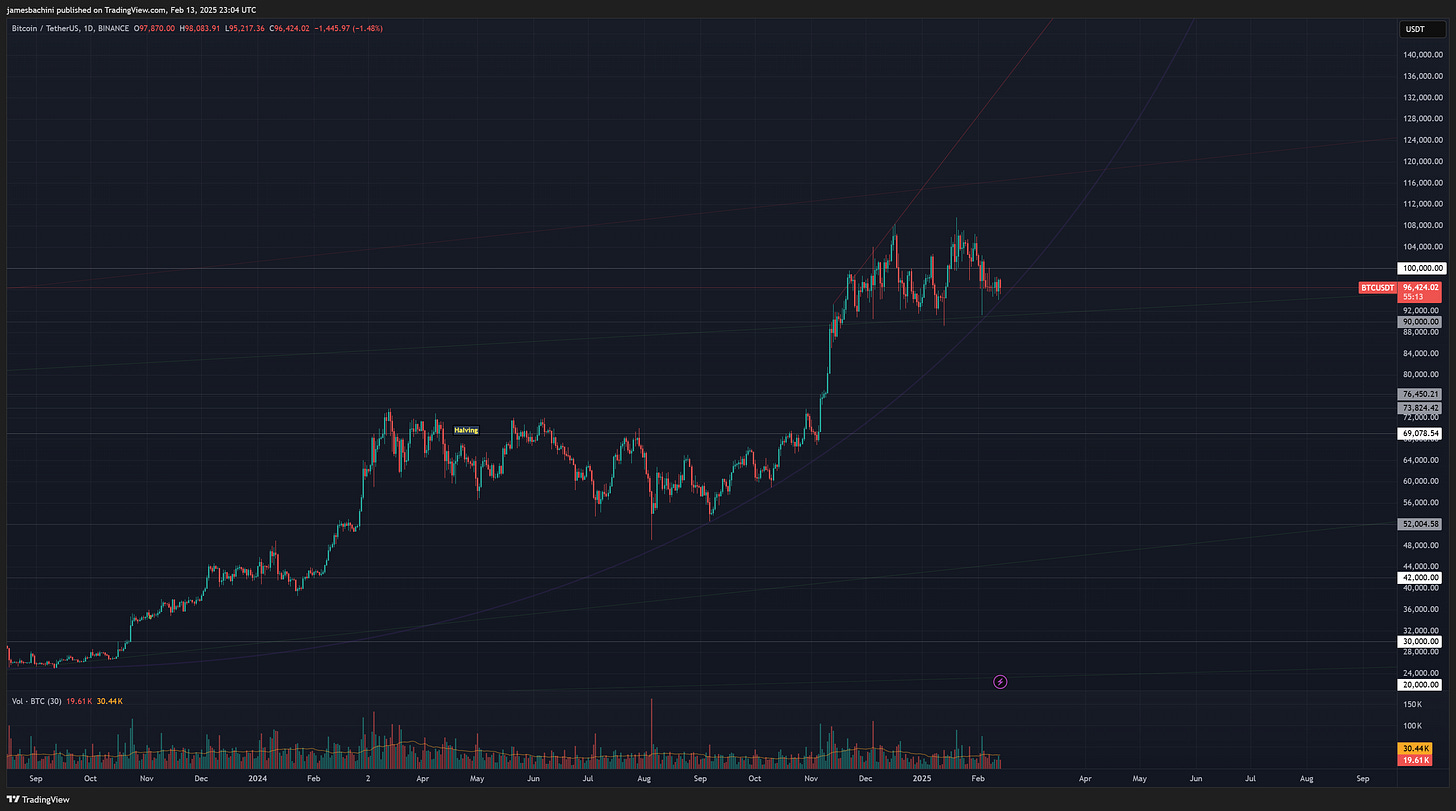In poker, first-order thinking means focusing on one’s own cards. A beginner might see a strong hand and bet without considering what their opponent might hold.
Second-order thinking asks: What does my opponent have? Skilled players analyse their opponent’s range and adjust their strategy accordingly. They “play the player, not the cards”
Third-order thinking takes it further: What does my opponent think I have? The best players use deception and representation to influence decisions.
This concept of levelling is just as relevant to crypto investing:
Right now many investors assume Bitcoin’s price will follow the four-year cycle, so they plan to sell in 2025 and buy back lower in 2026 or 2027.
If everyone follows this strategy, the market may react differently. Selling pressure could come earlier or we could see a supercycle pattern with reduced volatility against a depreciating dollar.
The best opportunities may lie in positioning ahead of the crowd and considering alternative strategies and possibilities others may overlook.
Bitcoin’s four-year cycle is a widely accepted pattern in the crypto market. Never more so than now where it has become a kind of dogma among hodlers.
Everyone knows the 2024 halving has delivered and set the stage for a potential bull market in 2025. Many investors expect to sell at peak prices and buy back in a few years at lower levels.
The assumption is simple. Bitcoin and the wider market will follow the same historical pattern, rewarding those who time their exit and re-entry correctly in line with previous cycles.
This approach, however, is first-order thinking. It reacts to market trends based purely on past performance.
Second-order thinking, questioning what happens when the majority follows the same strategy?
When markets crash, crypto assets often appear cheap. However, during downturns, sentiment is overwhelmingly negative. It’s terrifying and difficult to actually place bids into a liquidation cascade deep in a bear market.
Fear dominates in crashes, and greed fuels bull runs. The best opportunities emerge when the pendulum of bipolar mood swings is at it’s extremities.
Some of the best investors I know are immune to the echo chambers of community noise and hysteria. They have an ability to detach, look at the larger picture and think multiple steps ahead:
Challenge consensus. If everyone expects a sharp pullback, consider whether the market could behave differently. Could a shallow correction or sideways movement occur instead?
Adopt a poker mindset. Do not focus solely on your own position. Analyse broader market behaviour and anticipate the next move.
Recognise psychological traps. Market bottoms are rarely obvious in real-time. Focus on fundamental valuation rather than emotions.
Adapt to shifting conditions. Institutional participation, regulatory changes and macroeconomic factors can disrupt traditional cycles. Flexibility is key.
Play the long game. Instead of trying to time exact peaks and troughs, adjust based on the evolving situation. It’s ok to leave some chips on the table to ensure you don’t go out before the bubble.
Bitcoin is getting to the make or break stage of this consolidation period. If the bull market is going to get another leg up it will need to happen soon.
You could argue that this cycle’s continuation all comes down to one man, unfortunately that man is Michael Saylor
And he might be the biggest Bitcoin maxi to have ever walked the earth.
What would be nice is if he can create a continuous steady bid, siphoning money from tradfi through (Micro)Strategy and into BTC. What seems more likely is he will push as hard and as fast as he can with no concern about execution to acquire as much Bitcoin as possible as fast as possible.
Where this leads, only time will tell.
Social links are below and if you enjoyed this newsletter I would appreciate it if you could share this content













